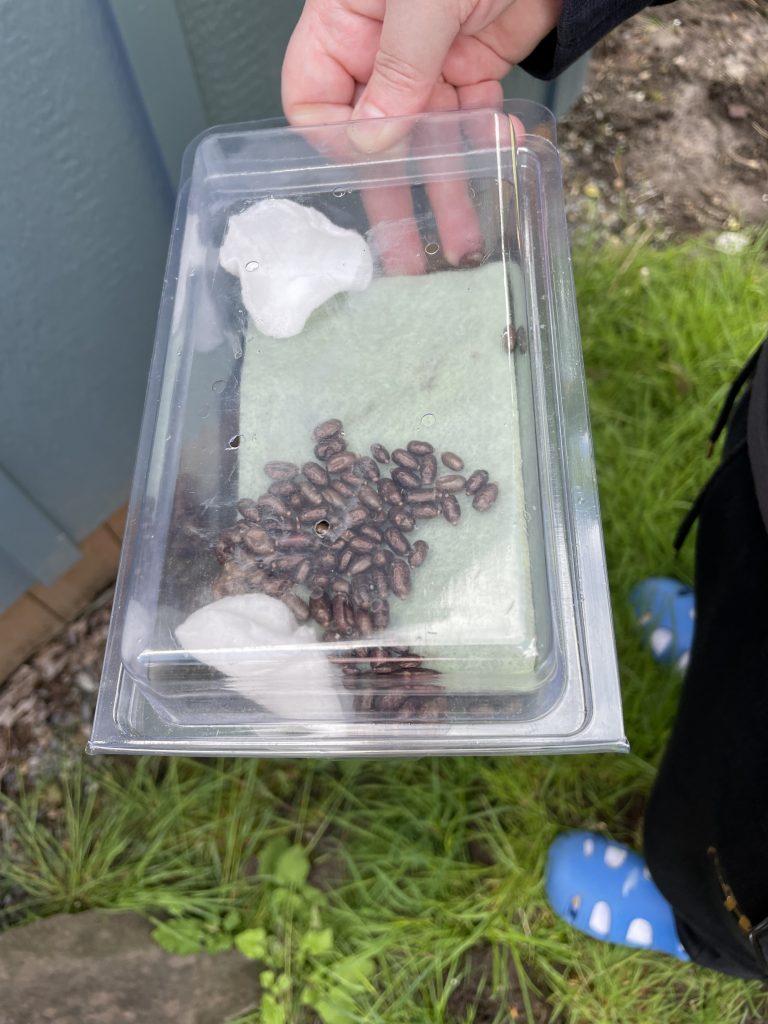
Introducing Native Bees To Our Backyard Garden
Gardening is a joyful activity that can be made even more delightful by supporting a community of pollinators, especially bees. Honeybees and native bees alike play a critical role in pollinating flowers, fruits, and vegetables in a garden. Pollination is necessary for fertilization, without which many plants cannot produce fruits or seeds, affecting the overall health and productivity of a garden and our food supply.

Bees are also essential for maintaining the biodiversity and balance of ecosystems. They serve as a crucial food source for birds and mammals and support other beneficial insects like ladybugs and lacewings, which help control pests in the garden. Gardeners can help create a healthy and diverse ecosystem by designing a garden that attracts bees and other pollinators.
For our garden, we purchase mason bees and leaf cutter bees from Crown Bees in Woodinville, Washington. The baby mason bees arrive in their little, water-proof cocoons and then chew their way out as soon as it gets warm, usually in June. We have them in a plastic incubator box until it’s ready to set them outside.

It’s so fun to watch them hatch and take their first flight! We installed this bee house on the east side of our studio so it will get hit with the first beams of warm sun. We use a combination of bamboo rods and cardboard tubes from Crown Bees to create the perfect habitat for them. They are sized to offer the best nesting site for masons and leaf cutters. The top of the house has a little attic where we put the cocoons. When the front of the house warms, the bees hatch and fly out the center hole in the attic and off to the garden to see what they can find to eat. They immediately start pollinating, so we always wait until we have something blooming before we put them out.

As the bees pollinate the garden they bring pollen back to the tubes and build their nests inside using mud to separate each egg. The hard working mason bees will fill each tube with eggs, pollen and mud until the end of the tube is reached. Then they’ll place a cap of mud at the end of the tube and move on to the next one. The tubes in this photo show the mud at the ends of the full tubes. They definitely prefer the bamboo reeds over the paper tubes.

Leaf cutter bees, which hatch in July, are shipped in a cardboard tube. Often they hatch inside the tube and are eager to fly out and start working right away.


They are hard workers that pollinate everything they can, and they’re easily recognizable by their unique task of cutting small sections of leaves and carrying them back to their tubes to build cocoons for their eggs.

Leaf cutters look similar to a honeybee. They have the yellow and black stripes like a honeybee but their body shape is different. They’re much smaller than honeybees but they have larger heads. The females even have teeth for cutting through those leaves to build her cocoons.

Increasing the population of native mason bees and leafcutter bees in our garden has improved our harvests, and we enjoy watching them every day. They’ve become adorable little friends that we love having around. We highly recommend checking out Crown Bees and introducing them to your garden. If you do, let us know how it goes!





